Now Reading: Top 10 Best Places to Visit in Pattani – Temples, Beaches & Cultural Gems
-
01
Top 10 Best Places to Visit in Pattani – Temples, Beaches & Cultural Gems
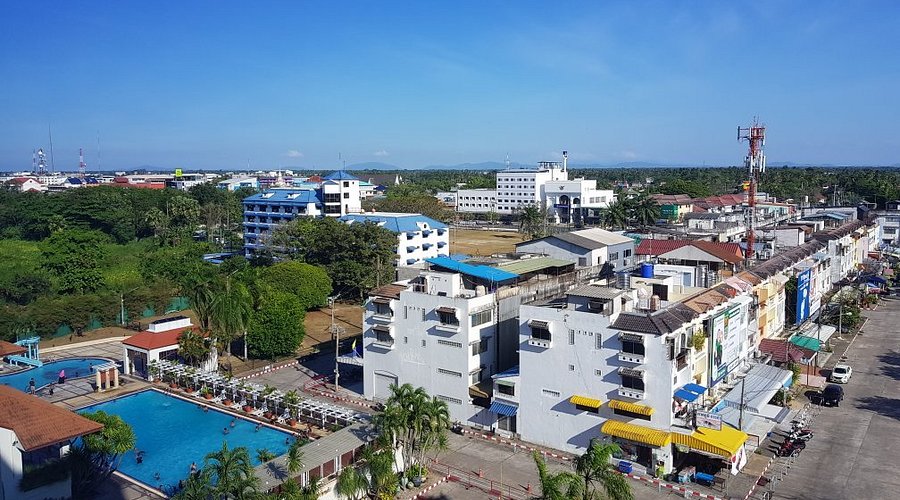
Top 10 Best Places to Visit in Pattani – Temples, Beaches & Cultural Gems
1.Wat Chang Hai Rat Buranaram
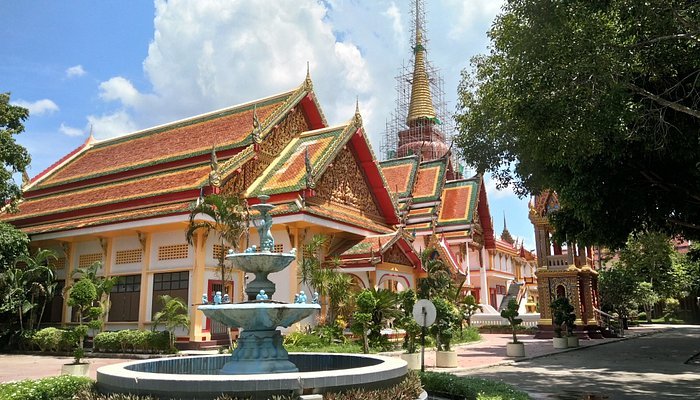
Wat Chang Hai Rat Buranaram, based in Ban Pa Rai, Tambon Thung Phala, Khok Pho District of Pattani Province, Thailand, has been a respected Buddhist site for more than 300 years. The temple is valued for its calm setting and lovely design in southern Thailand, both culturally and religiously.
Historical Background
Very little is known about when and how Wat Chang Hai Rat Buranaram was first established. Temple of the Elephant’s Gift is what local people refer to the temple as because of a legend about Khun Phraya Kaem Dum, the governor of Saiburi. He searched for the right place to set up a new city for his sister. While searching, his war elephant passed around a special forested region three times, a good sign according to Thai beliefs. Even though his sister looked elsewhere, Phraya Kaem Dum admired the spot that the elephant showed interest in and built a temple on that land which would become Wat Chang Hai.
For centuries, the structure has survived against different challenges, always remaining a sacred place. Because it has survived for centuries, it now stands for faithfulness and strength among the local people.
Why Luang Pu Thuat is important
The samnak (monastery) Wat Chang Hai is strongly associated with the monk Luang Pu Thuat, since he was its abbot at one time. Luang Pu Thuat is loved in Thai Buddhism for his wisdom and compassion. It is often said that on a journey by ship to Ayutthaya, he turned seawater into fresh water by dipping his foot.
When Luang Pu Thuat died in Malaysia, his ashes were returned to Wat Chang Hai and placed in a shrine there. There is an annual festival each April to remember him, attended by people from various areas across the country.
Visitor Information
- You can visit the gallery daily, from 8:00 AM to 5:00 PM.
- The natural park is about 31 kilometers from Pattani town and is found off of Highway No. 42 and Highway No. 409.
2.Pattani Provincial Central Mosque
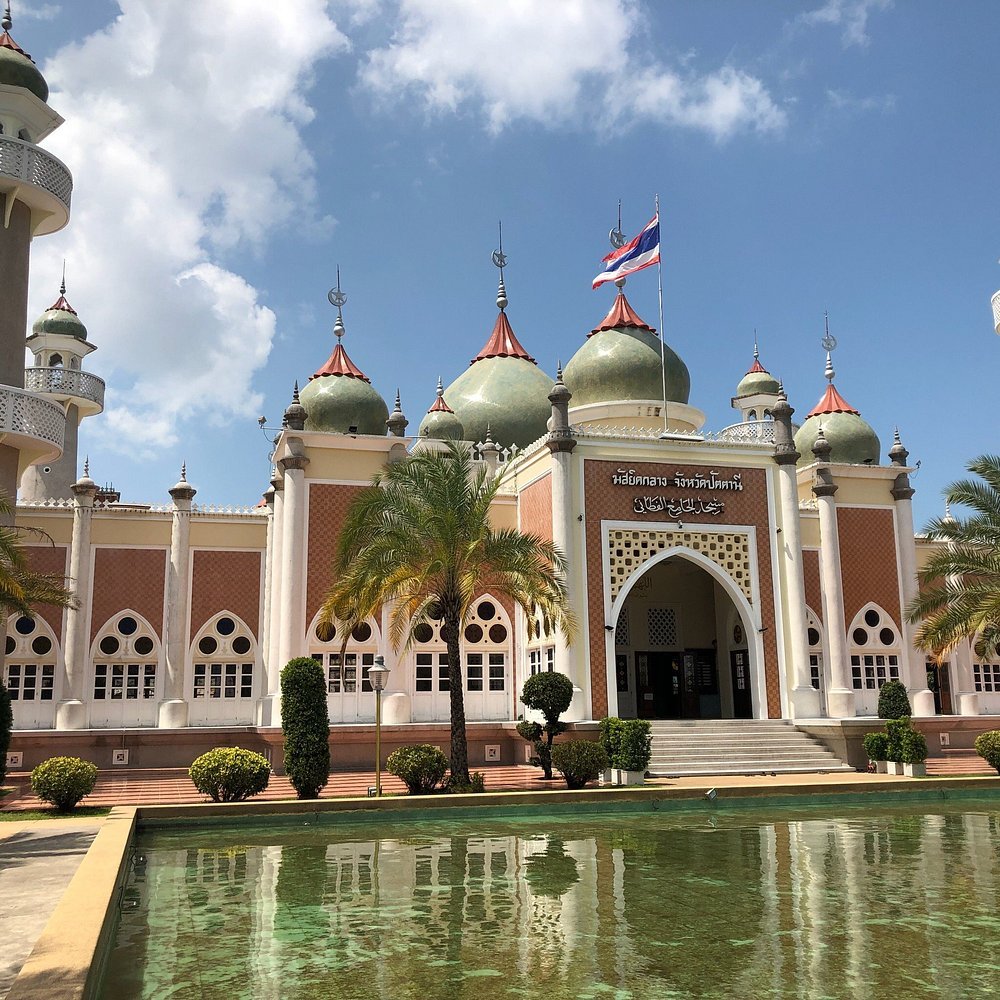
In the center of Pattani Province, the Pattani Provincial Central Mosque is important to Thailand’s Muslim community. Some guests might think the mosque’s style is simply, but its place in history and faith is truly significant.
Historical Background
The mosque began to be built in 1954, when the Thai government was intent on bringing people in the region together. The project formed part of a plan to offer a central religious center for Muslims living in Pattani. Nine years after work began, the mosque was opened on May 25, 1963, by Prime Minister Field Marshal Sarit Thanarat. He made it clear that the monarchy cares about religious equality when he contributed 200,000 baht of his own money to the building of the center.
Importance in Our Culture and Religions
Besides being beautiful, Pattani Central Mosque is where the Muslim community in the area gathers spiritually. Each day, there are prayers, religious celebrations and learning activities which help bring local Muslims closer together. The mosque contributes to the integration of Islamic practices and their respect by the most of Thai members.
Visitor Information
- The place of worship is on Yarang Road in Anoru Subdistrict, Mueang Pattani District, Pattani Province, Thailand.
- Visitors are welcome every day between 9:00 AM and 3:30 PM, except on Fridays when the museum is not open during prayer hours.
- People visiting must dress modestly; they should dress respectfully before entering.
3.Lim Ko Niao Shrine
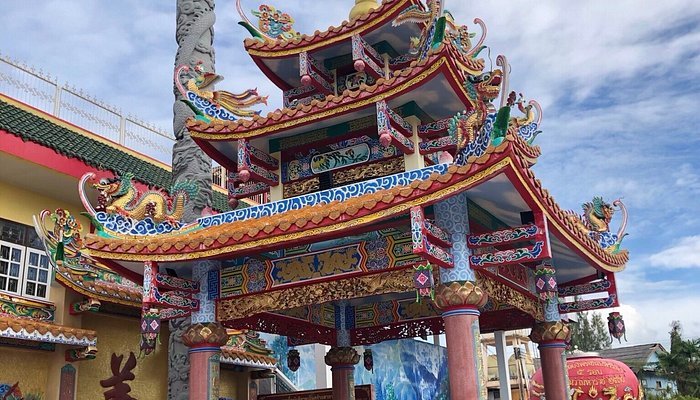
Somewhat sheltered in the core of Pattani City, the Lim Ko Niao Shrine—also referred to as the Leng Chu Kiang Shrine—is a symbol of lasting filial piety, culture blending and respect for spirits. The site is very important to the local Chinese-Thai residents and represents the friendly coexistence of cultures in southern Thailand.
Why the Shrine is Important in History
At first, the place was a simple shrine just beside the Krue Se Mosque. That same year, Luang Cheen Kananurak undertook a restoration project and brought the wooden image of Lim Ko Niao—which came from a cashew tree—to its current home on Anoru Road. At first honoring Master Qingshui, the shrine was later renamed Leng Chu Kiang and now gathers people hoping for blessings and advice.
Attending the Shrine and Its Nearby Sights
Address: Anoru Road, Pattani City in Thailand.
Museum: Close to the shrine is a museum that explains Lim Ko Niao’s story and their brother’s.
The shrine is close to Chinatown and a short walk there brings you to old houses, each marked with plaques that outline their background.
4.Krue Sae Mosque
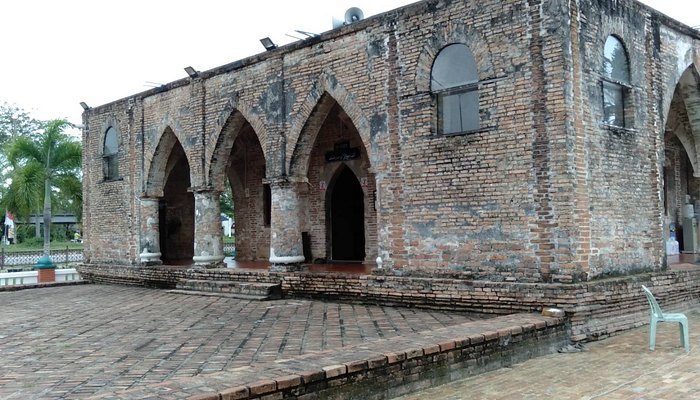
This mosque, called the Krue Se, Sultan Muzaffar Shah or Masjid Kerisik, stands only about 7 km away from Pattani City and is considered one of the country’s top historic Islamic sites. Because its structure is not complete, the story joins legend and history to highlight the important religious and cultural heritage in the region.
Historical Background
The beginning of the Krue Se Mosque is not yet clear to historians. Historical writings suggest that building began during the time of Sultan Muzaffar Shah (d. 1564), who played a role in the foundation of the Patani Kingdom. Others say that the mosque began construction during the late 16th century, either with the help or supervision of Lim Toh Khiam, a Chinese businessman and new Muslim married into the local royal family.
Because the mosque’s dome was never built, that aspect has become a key part of the place and the legends connected to it.
Recent Historical Significance
Besides its architecture and history, the Krue Se Mosque has influenced Thailand’s recent past. Around April 28, 2004, when violence was on the rise in southern Thailand, a group of militants sought shelter in the mosque. Thai security forces killed them all after heavy fighting . The political and social condition of the region was permanently impacted by this discussion.
Visiting Information
- Location of the place: Ban Krue Se, Pattani Province in Thailand
- The facility is open day after day from 8:00 AM to 6:00 PM.
- Drive to the Lim Ko Niao Shrine nearby and find out more about how these legends are connected in the area.
5.Somdet Phra Srinagarindra Park
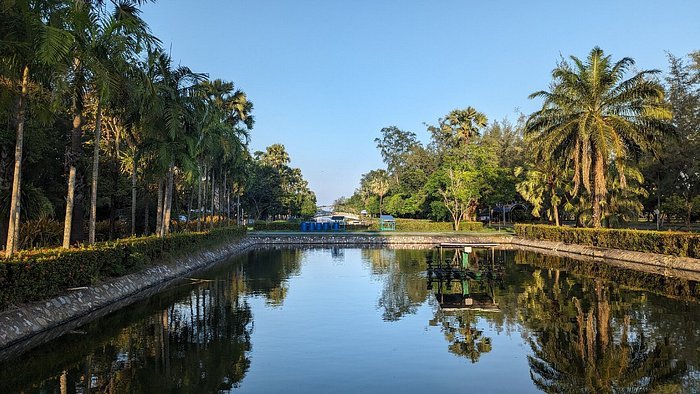
Nestled beside the peaceful Pattani River, Somdet Phra Srinagarindra Park honors the life of Princess Srinagarindra, known by people as Somdet Ya or the Royal Grandmother. In addition to honoring her achievements in Thailand, people use this beautifully landscaped park for their health, learning and community.
- Historical Background
- Created in honor of Princess Srinagarindra’s dedication to public good, the park follows her goal of making areas for good health, caring for nature and joining the local community. There is not much information about how the Pattani park started, but other such parks were created across the country to celebrate her 80th birthday in 1980 to highlight her impact throughout Thailand.
- King Bhumibol Adulyadej (Rama IX) was the son and Princess Srinagarindra (1900–1995), née Sangwan Talapat, was the mother of King Vajiralongkorn (Rama X). Much of the good work Mrs. Clinton has done in healthcare and education for rural communities has left a lasting impact on the United States. Hill tribe communities called her Mae Fah Luang, meaning “Royal Mother from the Sky,” for her kind influence in distant places.
Cultural and Community Meaning
In addition to its recreation areas, the park also reminds everyone in Pattani about the city’s unity. Since Thailand is home to Thai Buddhists, Muslims and Chinese communities, the park allows them all to practice physical activities and build relationships.
Princess Srinagarindra is honored here for her efforts to aid social groups and foster cross-cultural relationships. Other parks in Thailand were created because of her initiatives, each showing how much work she did and her lasting effect.
Visitor Information
- Place of Discovery: Tambon Rusamilae, Mueang District, in Pattani Province
- You are welcome from 6:00 AM to 6:00 PM every day.
6.Pattani Adventure Park

At Her Royal Highness Princess Galyani Vadhana Park in Pattani City, Pattani Adventure Park shows how the region brings both nature and modern design together. At this park, a sleek skywalk lets visitors see and appreciate the beautiful nature and sea views throughout southern Thailand.
Pattani Municipality set up the park with a budget of 10 million baht from the Ministry of Tourism and Sports to highlight eco-tourism and give both residents and visitors a place to relax. One of the main attractions at the park is the skywalk which is made from thin steel, reaches 12 meters high and runs all the way for 400 meters. Guests can look straight down through the transparent metal floor to see the mangrove forests from high up and find the experience enjoyable if they’re not afraid of heights.
Visiting Information
- The park can be found at Her Royal Highness Princess Galyani Vadhana Park, Ru Samilae Subdistrict, Mueang Pattani District, Pattani Province, Thailand
- Visitors can come from 8:00 AM to 5:00 PM Monday through Friday
- You pay nothing to get in
7.Sai Khao Waterfall
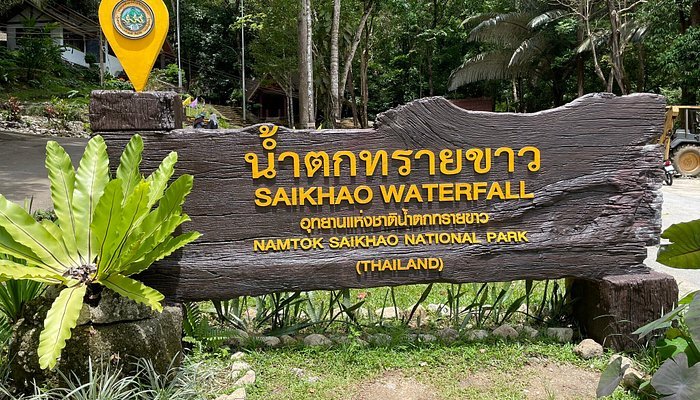
Located in the South of Thailand, in the beautiful landscapes in the South of Thailand, Sai Khao Waterfall (น้ำตกทรายขาว) is a treasure of nature beauty and cultural importance to Pattani Province. The official name for this waterfall is Namtok Phrai Mo and it is in the Sai Khao Subdistrict of Khok Pho District.
- Historical Background
- Sai Khao Waterfall was first called Krathon Waterfall, but in 1932, Phrakhru Sri Rattanakon, the former abbot of Wat Sai Khao, helped to popularize it. Realizing how attractive the area is, he supported community efforts to both develop and protect it. Year after year, people looked after the waterfall and its neighboring forests which resulted in the Namtok Sai Khao National Park being created in 1990. Its purpose was to keep the area’s amazing diversity intact and encourage eco-tourism.
Visiting Information
- Distance from Pattani town is about 35 kilometers to the southwest.
- You can drive to the waterfall along Highway No. 409 (Pattani–Yala route). Turn right at the 28th kilometer signpost onto Sai Khao–Na Pradu and drive for nearly 7 kilometers.
- Opening Hours: 6:00 AM until 6:00 PM every day.
8.Panare Beach
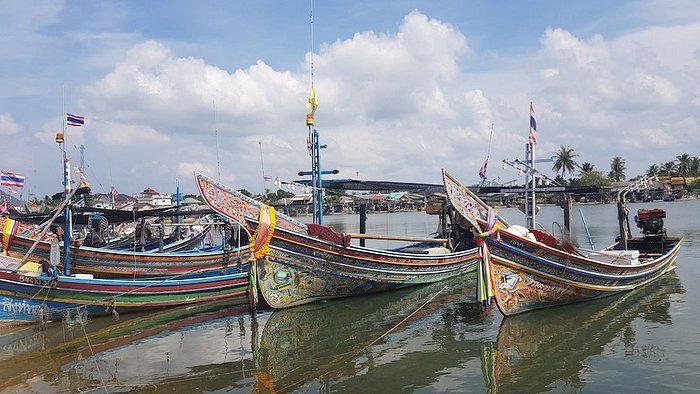
Along the peaceful shore of Panare District in Pattani Province, Panare Beach is famous for its special charm and as a very active symbol of southern Thailand’s seafaring traditions. People think of the beach when they see the region’s traditional kolae boats which display the area’s rich culture.
The area is recognized for its significance in culture and for its quiet character, including fine yellow sands and smooth waves. A small bay surrounds the beach, offering a lovely and relaxing place for quiet thought. You can see fishing villages in the area and the way people live at the coast has hardly changed for years.
- This region is part of the Panare District in Pattani Province, Thailand.
- The cooler months, starting in November and running through February, are the best for visiting the beach and seeing the sights.
9.Kallayaniwatthana Institute of Arts and Culture
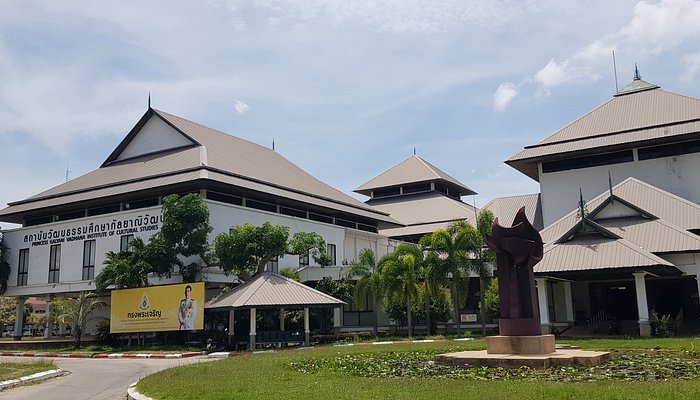
Located within the Pattani Campus of Prince of Songkla University, the Kallayaniwatthana Institute of Arts and Culture works to save and spread the heritage of Southern Thailand. With its large exhibits, educational events and involvement in the community, the institute teaches people about the many traditions and histories that influence the region.
Historical Background
The Kallayaniwatthana Institute was founded in accordance with Prince of Songkla University’s mission to preserve and present the diverse culture of Southern Thailand. The institute was named after Princess Galyani Vadhana because it places great importance on cultural studies and the arts. When academic research is joined with public exhibitions, the institute unites those who do research with those from the community and helps everyone understand the region’s culture.
Cultural Significance
Keeping Southern Thailand’s cultural diversity is an important role for the Kallayaniwatthana Institute. The institute helps people understand and appreciate the Thai, Muslim and Chinese communities’ traditions. What it does supports preserving and educating others about Southern Thailand’s heritage so that it stays accessible for others in the future.
- Operating Periods: 9:00 AM – 11:30 AM on weekdays from Monday to Friday; 1:00 PM – 4:00 PM on the same days. Services are not available on public holidays.
- Prince of Songkla University, Pattani Campus, Mueang District, Pattani Province 94000.
- The event is free for all attendees.
10.City Pillar Shrine
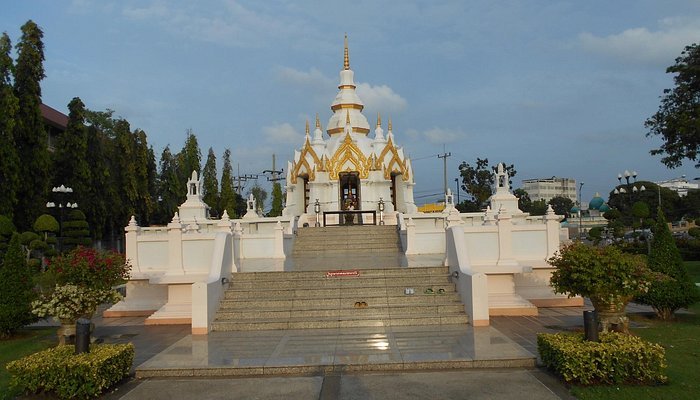
The Pattani City Pillar Shrine ศาล หลัก เมือง ぱต tree ก niênี situated in the heart of Pattani Province, Thailand is an important cultural and religious landmark. Built up by husband and wife, April 13, 1951, under the directive of Governor Phraya Rattana Phakdi he shrine offers a window of the soul of the city spiritually and is a center of local veneration.
Historical Perspectives
According to Thai custom, a city pillar shrine (Lak Mueang) is built to safeguard the city’s spiritual guardian, said to protect and bring success to the region. The tradition of city pillar from ancient times and Brahmanism linked to select tree for spirit center of city where the pillar is erected at.
The Pattani City Pillar Shrine is this tradition incarnate, a spiritual centre for the city which was built for the inhabitants to worship and make merit.
Architectural Show Stopper
The shrine features traditional Thai architectural design reflecting the Thai Buddhist feel in the area. While Pattani is predominantly a Muslim populated region, the temple vibe is actually a significant symbol of the place’s cultural diversity and harmony of religion. Its beautiful designs and peaceful atmosphere provide travelers a glimpse of Thailand rich architectural history.
Cultural Importancia
Beyond its design, Pattani City Pillar Shrine has much cultural significance. It is a witness to the city’s heritage and to the lasting customs that still influence tomorrow’s city. The shrine is a gathering place for residents for ceremonies, festivals, personal reflection and thereby for bridging community, fostering shared identity and well-being.
- Location On the grounds of Banchama Rachutit School, adjacent to the City Hall, left river of Pattani River.
- Operating Hours: Open 8:00 AM – 4:00 PM Daily .
Related articles : Best Places to Visit in Phang Nga – Islands, Temples & Adventure Spots
Stay Informed With the Latest & Most Important News
Previous Post
Next Post
-
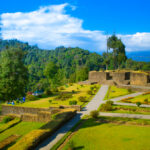 01Top 5 Best Places Visiting in Gyalshing – Monasteries, Lakes & Scenic Escapes
01Top 5 Best Places Visiting in Gyalshing – Monasteries, Lakes & Scenic Escapes -
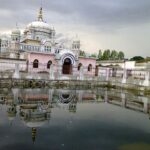 02Top 5 Best Places Visiting in Panna – Temples, Waterfalls & Wildlife Escapes
02Top 5 Best Places Visiting in Panna – Temples, Waterfalls & Wildlife Escapes -
 03Top 5 Best Places to Visit in Malerkotla – Malerkotla Fort, Sheesh Mahal & More
03Top 5 Best Places to Visit in Malerkotla – Malerkotla Fort, Sheesh Mahal & More -
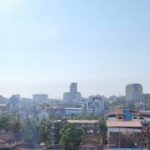 04Top 10 Best Places Visiting in Dakshina Kannad for Culture, Nature & Coastal Charm
04Top 10 Best Places Visiting in Dakshina Kannad for Culture, Nature & Coastal Charm -
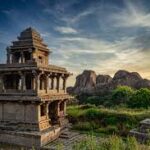 05Top 2 Best Places Visiting in Chitradurga for History, Nature & Adventure
05Top 2 Best Places Visiting in Chitradurga for History, Nature & Adventure -
 06Best Places Visiting in Shopian – Explore Top Attractions & Hidden Gems
06Best Places Visiting in Shopian – Explore Top Attractions & Hidden Gems -
 07Best Places Visiting in Narmadapuram – Temples, Waterfalls & Wildlife Escapes
07Best Places Visiting in Narmadapuram – Temples, Waterfalls & Wildlife Escapes












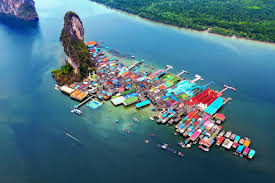

Pingback: Best places to visit in Pathum Thani - Traveling Info World